To reduce energy usage and save on energy costs, you first need to gain an understanding of how your organization is using energy. Here are eight tips to conducting an energy audit.
Learn Your Metrics and Benchmarks
Use the ENERGY STAR© Portfolio Manager, an interactive tool that helps you track and mange water and energy usage across all your buildings. Gather your utility bills and enter your consumption data, cost information, and operational usage details into the calculator. The ENERGY STAR Portfolio Manager will create over 100 trackable metrics. Your buildings may even receive an ENERGY STAR score that compares their energy performance to similar buildings across the nation.
Find Air Leaks
Walk around and search for air leaks by putting your hand up to different areas in and around your building to see if you feel any air. This typically works best on cold days when you’ll feel a cool draft. Inside your building, you’ll want to look at your baseboards and places where your walls and ceilings come together. Switches and electrical outlets can also be common areas for air leaks. Outside, you’ll want to check your windows and doors, as well as places where different building materials like metal, wood, and brick meet. Make sure to tally the number of air leaks you find in a journal.
Verify Insulation Levels
The lower your insulation levels, the greater the chance you’ll experience energy loss. With insulation levels, the first thing to identify is when your building was built. Older buildings likely used the recommended insulation levels during the era it was built, but those recommended levels have since changed. The Insulation Institute provides industry resource standards for different commercial buildings. These resources allow you to check how thick your exterior wall insulation is by shining a flashlight into an outlet box. If your building has an attic, you’ll want to make sure your insulation is above the attic floor joists.
Check Your Thermostat
Heating and cooling can be responsible for a large chunk of your building's energy bill. A work space that’s too cold in the summer or too hot in the winter not only wastes energy but is also bad for business, as workers are less productive. Turning your thermostat up or down by just a couple of degrees can greatly reduce costs on energy bills. A smart thermostat can further help you regulate temperatures by turning the heat and air conditioning down during non-office hours.
Inspect Your HVAC
Along with your thermostat, make sure you are performing the recommended maintenance on your HVAC unit. This could mean changing the filters about every 12 weeks or having a technician service it once a year. If your HVAC is over 15 years old, consider replacing it with a more energy-efficient model that can reduce your energy consumption.
Look at Your Lighting
If you’re still using incandescent or fluorescent lighting in your building, consider upgrading to the more energy-efficient LEDs. Most LEDs last an average of 25,000 hours and use a lot less energy compared to other light bulbs. In addition, dimmers and timers can help you reduce the amount of time your lights are on, especially if an employee forgets to shut the lights off when they leave a conference room or head out for the night.
Assess Nighttime Power
Between office computers, printers, and TVs, or industrial equipment in your manufacturing warehouse, these machines and devices use a lot of energy. Even when they’re not in use, they are still drawing power. Unplugging or using an energy-efficient power strip so they are fully turned off can make a difference when it comes to your energy bill.
Contact a Professional
To get a thorough understanding of your organization's energy usage, getting a professional energy audit from a certified professional will provide you the guidance you need to make significant changes. When identifying a company to conduct an energy audit, you should look for those that employ professionally certified inspectors. These include individuals with an ASHRAE or CEM certification. ASHRAE stands for American Society of Heating, Refrigerating and Air-Conditioning Engineers. CEM is a Certified Energy Manager.
Not sure who to contact? Check out NOPEC's Preferred Partner Network for a list of trusted, Ohio-based energy auditing firms.
Next Steps: Establish a Baseline and Move Forward
The results of your commercial energy audit will show where your business is using the most energy. The next step is finding energy-efficient ways to cut down on energy, be it LED lights, an upgraded HVAC system, or added insulation, to name a few.
Need financing to help your small business become more energy efficient? NOPEC’s PACE loan program allows commercial property owners to finance energy efficiency and renewable energy improvement projects by offering low-interest rates. Learn more about the benefits of a PACE loan, so you can start saving on small business energy costs.
Categories: Energy Efficiency


